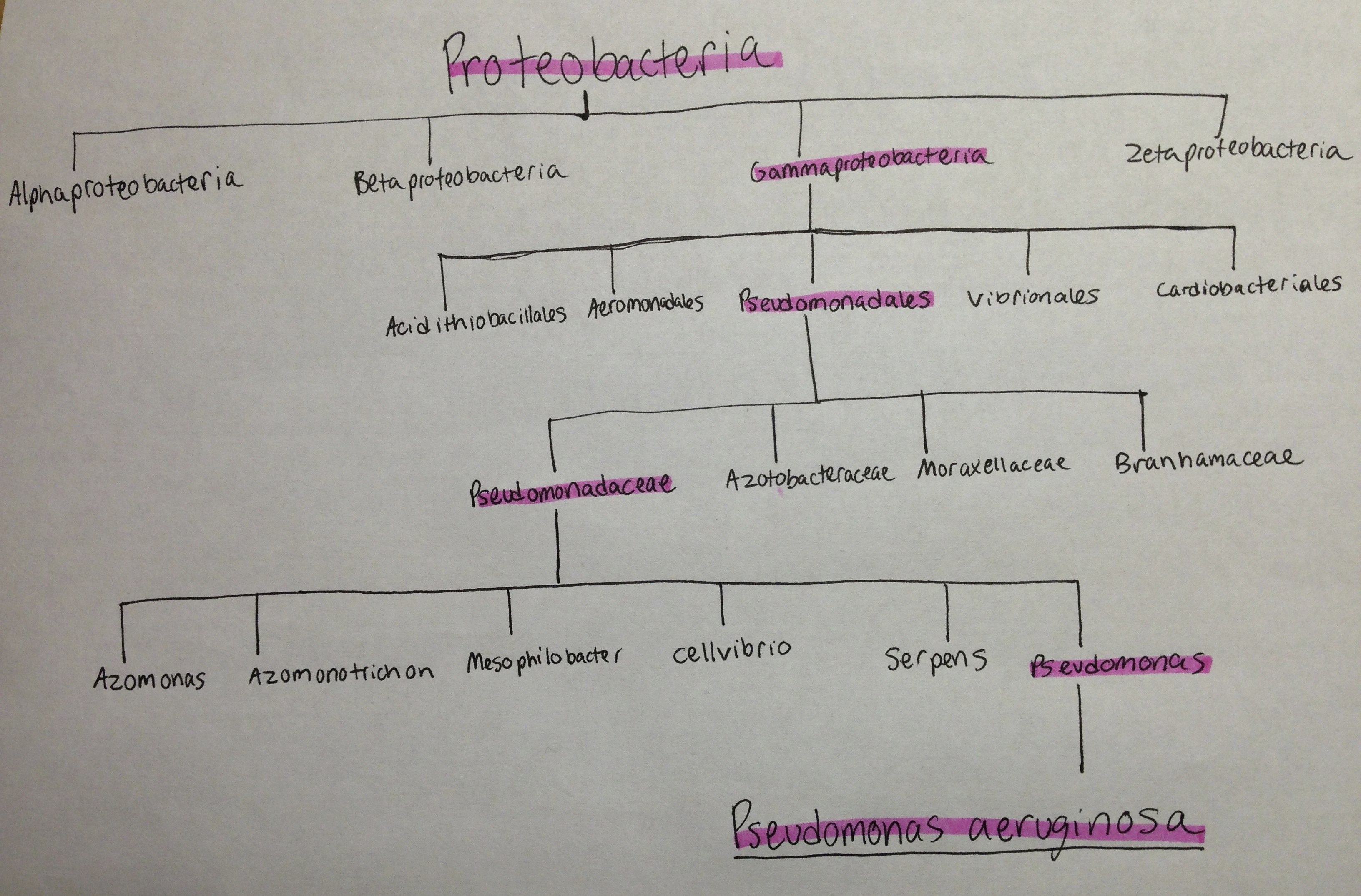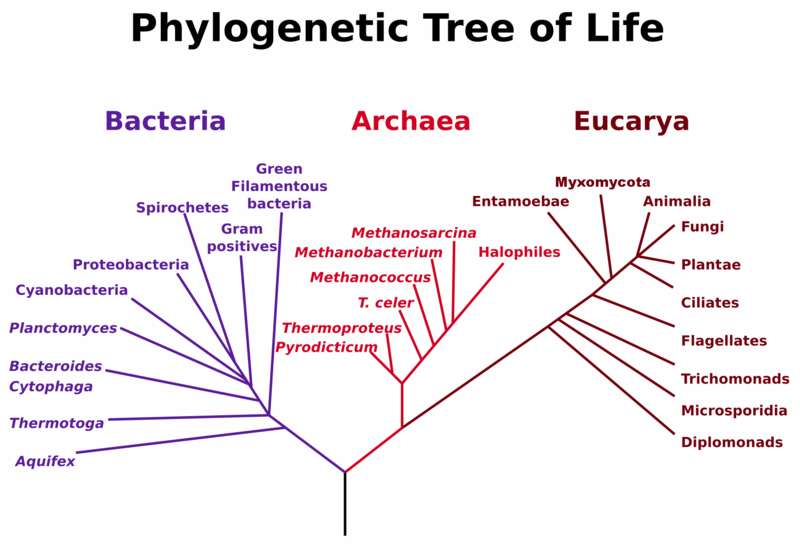Classification
What kind of organism are you anyway?
Above image from WikiCommons.
Domain: Bacteria
Phylum: Proteobacteria
Class: Gammaproteobacteria
Order: Pseudomonadales
Family: Pseudomonadaceae
Genus: Pseudomonas
Species: Pseudomonas aeruginosa
Breaking it down:
Domain: Bacteria
To be considered a bacteria, the organism first must be unicellular
or single celled. Already, this eliminates many organisms from being
classified as bacteria. Bacteria are also classified because of the
absence of a nucleus and any membrane bound organelles within the
cell. Because there is no nucleus to contain the bacteria’s genetic
material, the DNA of bacteria is a single loop. Some other
structures that are seen within bacteria include cytoplasm,
ribosomes, often times a flagellum or cilia, a plasma membrane, a
cell wall, sometimes a capsule (thin outer layer), and pili.
These organisms can be found everywhere and come in many different
shapes, including rod, spherical or even spiral. Other examples:
Shigella sonnei,
Bacillus cereus, and
Clostridium perfringens.

The above picture was drawn by me. I looked at the different members from each subsection and composed a tree.
Phylum: Proteobacteria
These bacteria are regarded as a very diverse group that are usually
considered pathogens. These are classified by their metabolic
diversity as well as being gram-negative bacteria. Many of these
organisms have flagella or use gliding as a way of locomotion. Some
of these organisms use photosynthesis as means of obtaining energy.
The subgroups of this phylum are classified based on the ribosomal
RNA sequences. Other examples of organisms in this phylum:
Campylobacter jejuni and
Aeromonas hydrophila.
Class: Gammaproteobacteria
Most organisms within this class are of the rod shaped- bacillus.
Organisms within this group are either photoautotrophic or
heterotrophic. These organisms are also methane oxidizers. Other
gammaproteobacteria include:
Plesiomonas shigelloides,
Vibrio parahaemolyticus and
E. coli.
Order: Pseudomonadales
These bacteria are rod shaped and move by polar flagella. Some of
these organisms contain pigments that are photosynthetic. They also
do not have spores.
Family: Pseudomonadaceae (false unit)
These bacteria’s environments are commonly soil or water. Sometimes
members of this family can be found in plants, making them a
pathogen to plants as well. Metabolism of glucose in these bacteria
is done by Entner Doudoroff.
Genus: Pseudomonas
These bacteria often secrete pyoverdine, which are yellow-green
pigments.
In addition, they can sometimes be found in a biofilm. Another
species of bacteria that also falls under this genus is
Pseudomonas syringae.
Species: Pseudomonas aeruginosa
The meaning of this organism can be broken down into parts. The
genus name in Latin means 'false unit.' The species name in Latin
means 'copper rust.' This term is referring to the pigment
coloration that Pseudomonas aeruginosa gives off when it is
cultured in a lab setting.
This organism is a pathogen, more specifically, an opportunistic
one. By being opportunistic, this organism thrives off the breakdown
of the host’s immune system, often from some form of infection.
Fermentation is never used. Two different types of pigments can be
produced, pyoverdin as well as pyocyanin, which is a blue pigment.
Now that you know how this organism is classified, let's check out where it lives! (Habitat)

